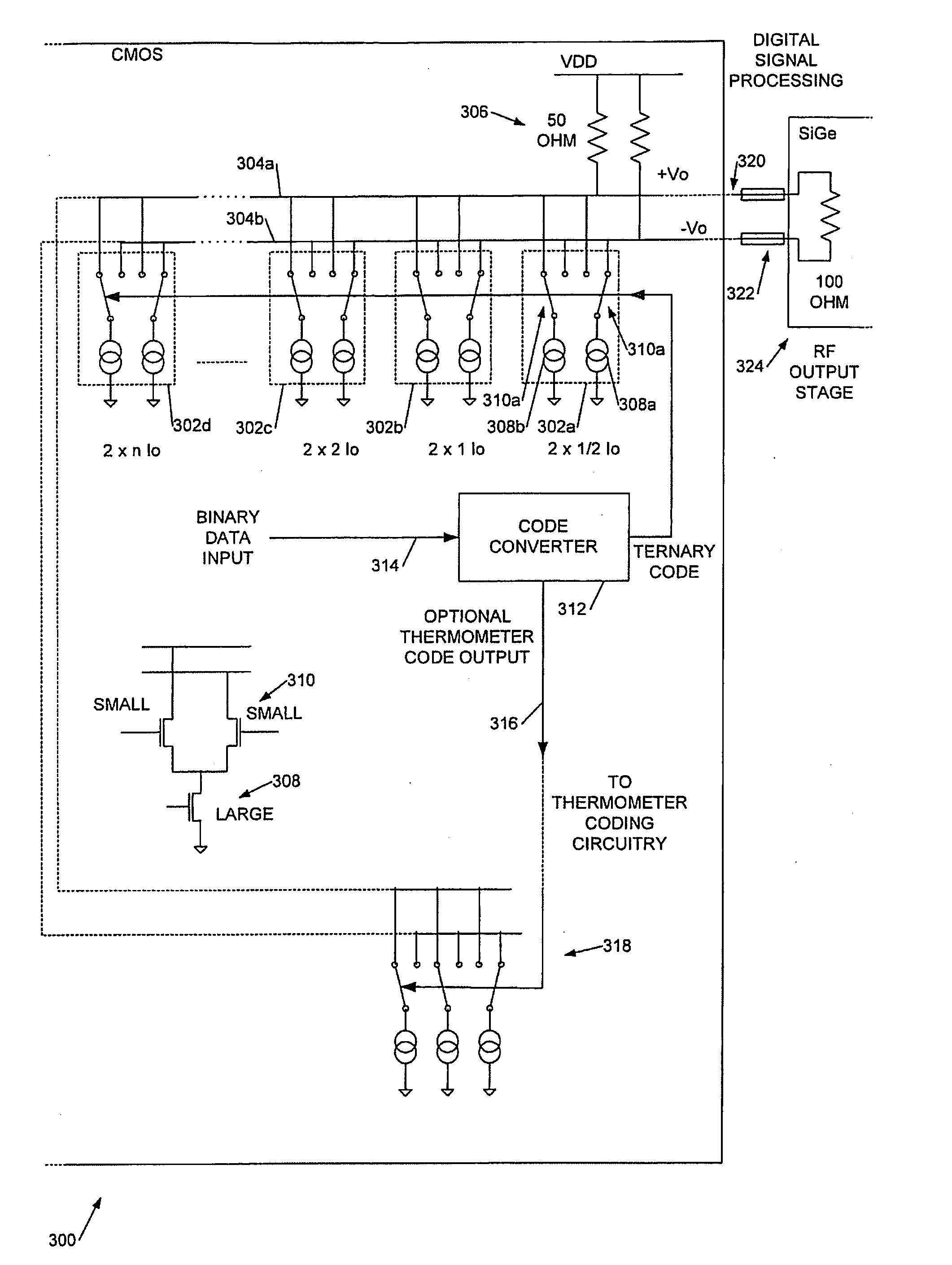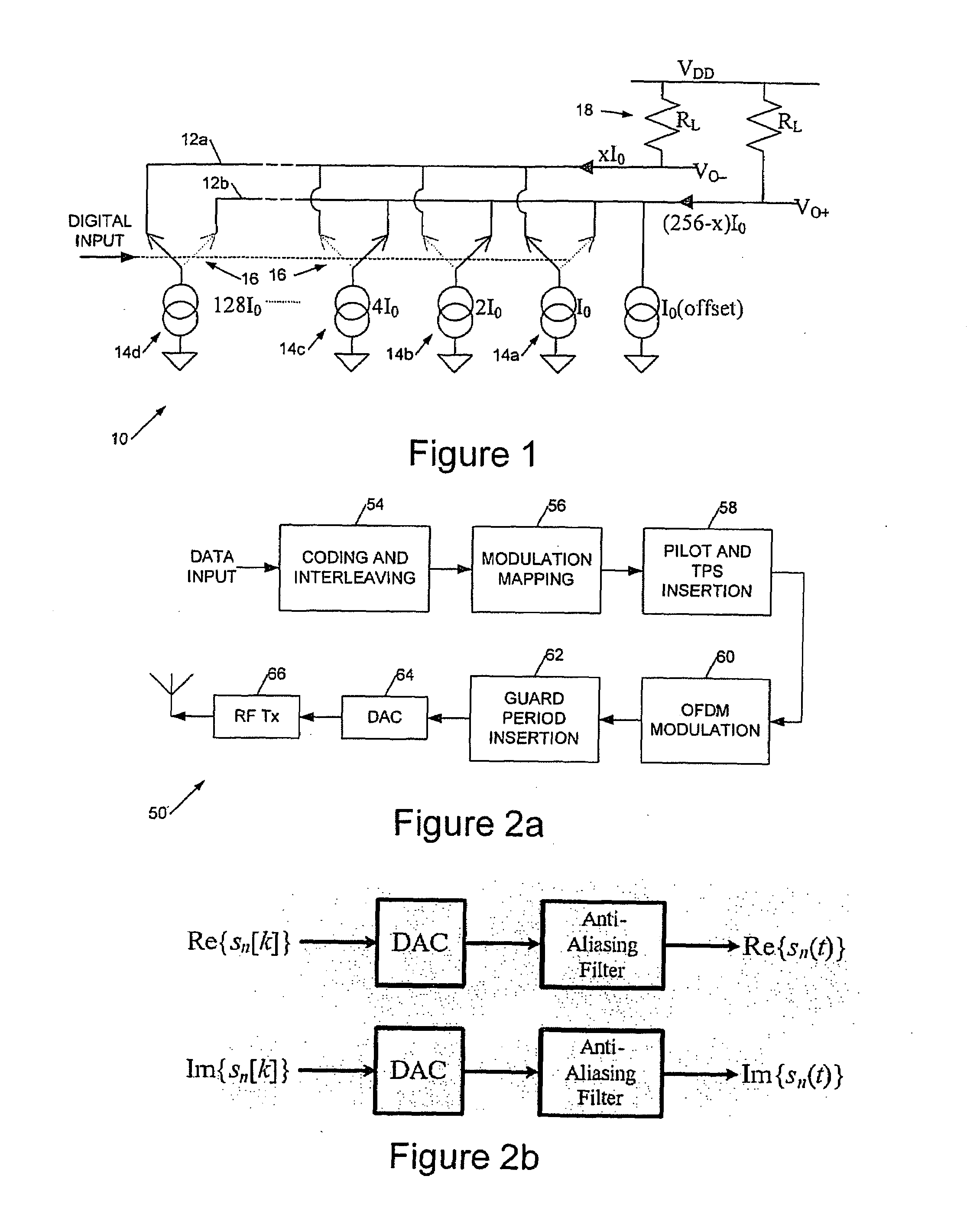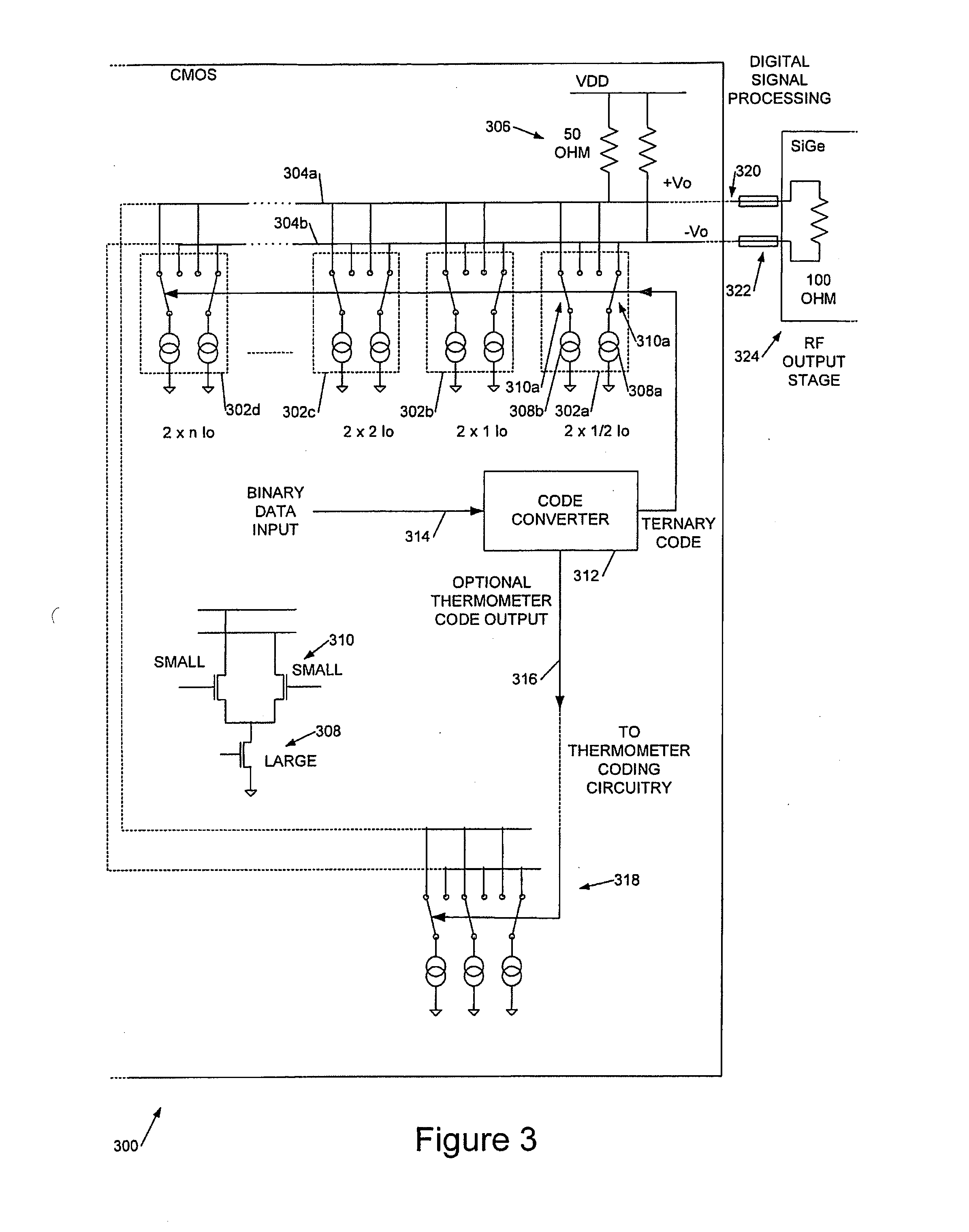Digital-to-analogue converters
a digital-to-analog converter and converter technology, applied in the field of digital-to-analog converters, can solve the problems of large total error, two currents may not be exactly matched, and output levels are error-prone, so as to reduce noise converting
- Summary
- Abstract
- Description
- Claims
- Application Information
AI Technical Summary
Benefits of technology
Problems solved by technology
Method used
Image
Examples
Embodiment Construction
[0046]Broadly speaking we will describe a current-steering DAC in which a major transition for small signals at the zero point of a differential output is avoided, albeit at the cost of a slightly reduced negative range, for example from −128 to −127 for an 8-bit DAC. We will describe how the MSB transition may be avoided by rearranging the switches so that all the currents substantially cancel at the centre of the range. Further, the switches are arranged so that LSB switches are used to create small, preferably the smallest possible steps (transition-related errors) when moving away from the centre (0) of the range. Still further away from the centre, the MSB switches are toggled; this potentially creates larger errors but these are now out of the normal operating range, for example of an OFDM signal, or at least in a place where the signal is larger. The DAC is also useful in other RF communication systems for converting digitised to analogue RF, in particular in a transmitter.
[0...
PUM
 Login to View More
Login to View More Abstract
Description
Claims
Application Information
 Login to View More
Login to View More - R&D
- Intellectual Property
- Life Sciences
- Materials
- Tech Scout
- Unparalleled Data Quality
- Higher Quality Content
- 60% Fewer Hallucinations
Browse by: Latest US Patents, China's latest patents, Technical Efficacy Thesaurus, Application Domain, Technology Topic, Popular Technical Reports.
© 2025 PatSnap. All rights reserved.Legal|Privacy policy|Modern Slavery Act Transparency Statement|Sitemap|About US| Contact US: help@patsnap.com



